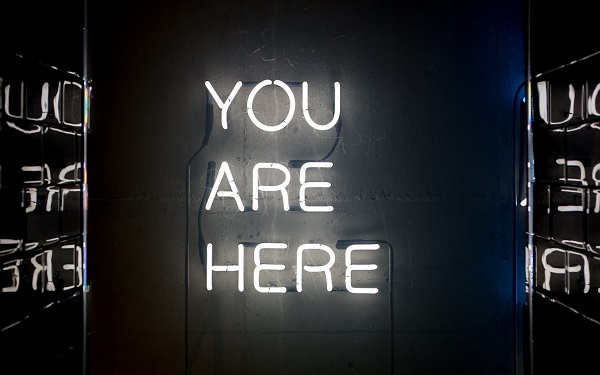Before you get to work creating the greatest character of all time for your novel, you also have to stop and consider which perspective you want to tell your story from.
Which one fits your story? Which will help you tell it in the best possible way?
Today we’re clearing all your doubts, breaking down all your questions and helping you choose the best point of view for your story.
Which point of view is right for my novel?
Honestly, the best point of view you can choose is the one that makes the most sense for your specific story.
But with so many options available to you, we understand it can be a daunting task to decide which POV that is.
Keep in mind, however, there is no right or wrong point of view to use! Truthfully, you can tell your story from whichever perspective you see fit.
With that being said, some stories are better suited for a specific point of view. But we’ll touch on that a bit later.
Before we begin, ask yourself these questions:
- Which POV feels most natural to the story?
- Which POV gives you the greatest amount of creative power?
- Which POV tells the story the best?
- Which POV is quickest or easiest to write in?
With those questions in mind, read on as we analyse four points of view with specific examples to help you decide which one is best for your story.

1. First person point of view
Generally, when writing in first person point of view, you tell the story through the eyes of one character. This POV is revealed by the ‘I’ sentence construction.
The brilliant thing about first person is that it plops readers directly in the protagonist’s shoes. Readers experience the story through the character’s eyes, and may even feel as if they become that character as they read.
Need an example? Think of YA novels like The Hunger Games and Divergent.
While first person point of view gives the reader a deeper look inside the character’s thoughts, thereby forming a deeper connection, it does have its drawbacks, as the reader is limited to one thought process.
It can be a challenge if we need to hear from other characters to further deepen the plot.
Let’s look at an example of first person POV:
“I glared at the strawberry smoothie in his hand. He thought he was hot stuff, strolling into the class like that after he’d embarrassed me in front of the entire school. Well, if he thought this was the end, he had another think coming. I was determined to make his life a living nightmare.”
This point of view will work for your novel if you want:
- the reader to truly connect with the protagonist and to get an in-depth look at their motivations/thoughts.
- an obvious and clear hero for your story.
- your reader to have a closer, more immediate experience with the story and protagonist.
- the voice of your story to be quirky, snarky or very unique to your character.
2. Second person point of view
Second person point of view is characterised by a narrator telling the story to another character using the word ‘you’. Or, in some cases, the ‘you’ addresses the reader directly.
Take N.K. Jemisin’s The Fifth Season (and the following books in The Broken Earth Trilogy), for example. Jemisin intersperses passages of second person narration with first and third (getting the best of all three worlds!).
The Broken Earth Trilogy is quite a rarity, however. While other stories and novels written in second person do exist, they are much harder to find than narratives written from first or third person perspective.
Why?
It can be a challenge to develop characters and plots in second person, as the story is told as though the reader is a character.
It’s also not a natural way we speak when telling stories or writing fiction. As you write, you have to remain extra conscious of which tense you’re using.
Arguably, it is much easier to develop a story with first or third person narrative, because of the immediacy of connection we establish in first person and the more objective approach of third person.
Here’s an example of second person point of view:
“You’re staring at the window, with nothing else to do. You feel lost, you feel abandoned. I bet you’re asking yourself how you even got to this place. You have no one else in the world. So what do you do? Well, you’re about to find out now. Prepare yourself. You’re in for a wild ride.”
This point of view will work for your novel if you want to:
- bring the reader closer to the story, making them feel as if it’s literally happening to them.
- create more ‘distance’ between the narrator and the character.
- give your narrator someone to address – it this case, your reader.

3. Third person limited point of view
In third person limited narrative, we hear the story from a disembodied narrator. The characters are referred to with the pronouns ‘he/she/they’.
Readers are afforded insight into characters’ thoughts and feelings, but this is framed through third person pronouns rather than ‘I’.
The ‘limited’ in ‘third person limited’ refers to the fact that not every character is a POV character; usually, it’s only your protagonist’s point of view from which the story is told (or protagonists, if you have more than one main character).
Third person affords you more freedom in how you tell the story. You have more leeway to be objective than you would with first person, which is a subjective approach, told as if you are the character themselves.
If you need help deciding whether the third person limited point of view is right for your story, to simplify things, picture your story being told through the lens of a camera.
The world, your characters, the setting, the action is all told through solely through that lens for the entire novel, rather than directly through a character’s eyes. Essentially, your reader will be watching your ‘movie’.
Let’s see this example in action:
“Molly strolled through the hallway, gaze averted. She had no desire to lock eyes with him. She was still not sure if she could face him. But, as she passed his locker, the hair on her neck stood straight up. She felt as though she’d ingested a mouthful of sand. Daring a glance over one shoulder, she brushed her hair back, a guise so she could see if he was looking at her.”
This point of view will work for your novel if you want:
- your reader to have a less ‘claustrophobic’ experience.
- your reader to experience things at face value.
- to have more creative freedom and/or tell the story from multiple points of view.
4. Third person omniscient point of view
The omniscient narrator is still a disembodied narrator, as with third person limited point of view. However, an omniscient narrator knows everything about the story and its characters, rather than only what the current POV character knows.
This point of view is very free, as it allows the narrative to bounce from one character’s perspective to another. On a single page or scene, it’s possible for the reader to tap into the mind of many characters.
Let’s look at an example:
“Olivia sat in the back of the diner next to the flickering fireplace, seeking warmth from the cold, rainy night. She missed nights like these, when she and Gary would spend their time lost in the depths of each other’s eyes. While they’d not talked for quite some time, she still craved his touch, his smell, his presence beside her at night.
The doorbell chimed as the door opened, bringing in a gust of cold wind that made the guests shiver. Gary strolled in. He took a seat and sought out the menu, choosing to stick with his usual gravy-and-patty-with-biscuit combo. Feeling someone’s gaze burning into his neck, he twisted, catching Olivia’s small form huddled in the corner next to the fireplace for warmth. Olivia clutched her coffee to her chest, making a small, strangled noise in the back of her throat.”
This point of view will work for your novel if you want:
- to reveal details to the reader that the characters don’t know about (yet… or maybe ever).
- to explore different character voices and perspectives within single scenes, rather than separating POVs with scene or chapter breaks.
- more freedom to explore your story through a wide variety of characters’ thoughts and actions.

We hope you now have a much better idea of the various points of views with which you can write a novel, and how to implement them in your own writing.
Remember, the best point of view you can choose for your novel is the one that makes the most sense for the specific story you’re telling.
Decide if you want a close and personal relationship between the reader and character, if you’d prefer to have your reader viewing your world through the lens of a camera, or if you want your reader to know everything, even if your characters don’t.